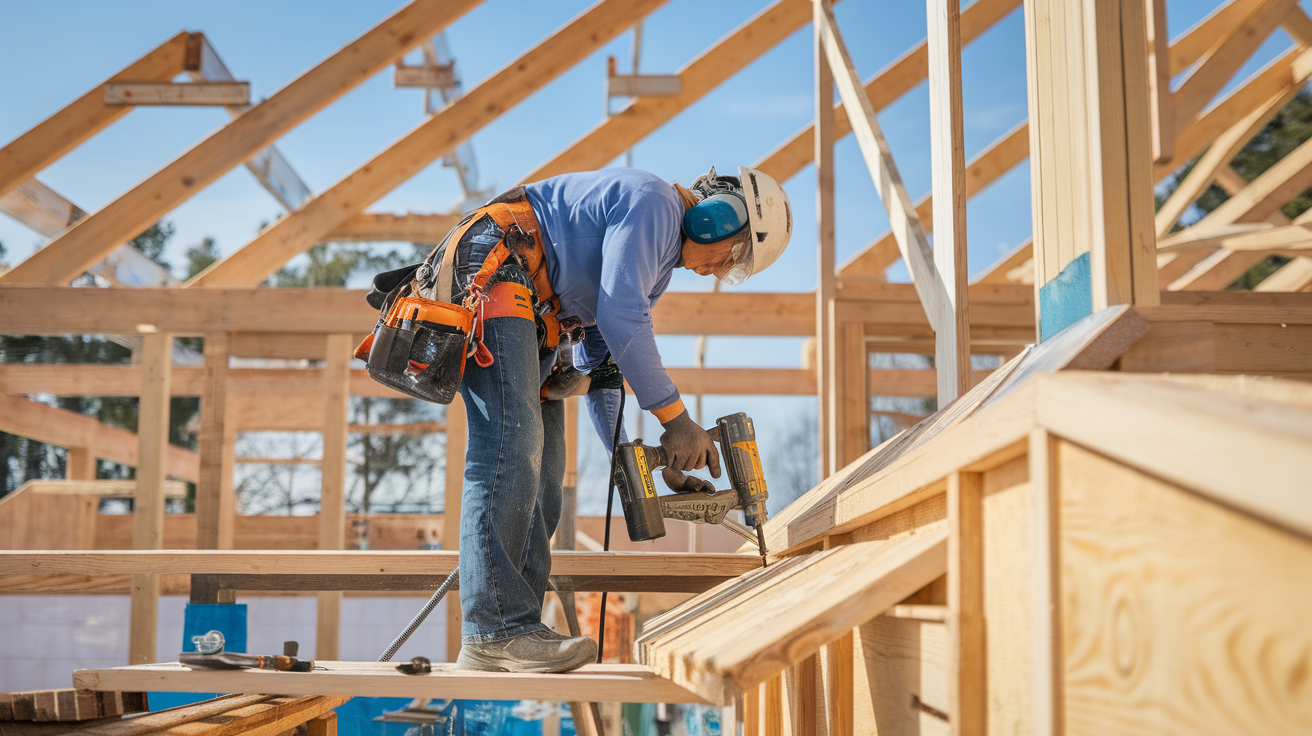A well-planned roof is not just about shelter; it’s an essential part of your home’s structure that protects your investment, enhances curb appeal, and complements your climate.
No matter if you’re constructing a sleek, modern flat-roof home or a traditional design with a 24-inch (61 cm) pitch, your choices in roofing materials, design, and contractors play a significant role in the overall success of your project.
The right roofing system will ensure durability, energy efficiency, and aesthetic appeal, while a poor choice can lead to costly repairs and damage down the line.
In this comprehensive guide, I’ll walk you through everything you need to know about roofing for new builds.
From selecting durable materials to planning your budget and finding reliable contractors, you’ll receive expert advice on making the best decisions for your home.
Why Roofing Planning Matters for New Construction
A solid roofing plan is the backbone of your new home, and I want you to nail it.
The right roof shields your house from the weather, boosts energy efficiency, and adds visual charm.
When tackling roofing for new construction, focus on solutions that fit your home’s design and local conditions. Here’s what to prioritize:
- Weather Protection: Choose materials that handle rain, wind, or snow.
- Energy Savings: Opt for designs that improve insulation and reduce costs.
- Aesthetic Fit: Select styles that complement your home’s look.
- Long-Term Value: Invest in quality to avoid frequent repairs.
Key Considerations for Roofing a New Build
Roofing a new home, like one with a 24-inch (61 cm) pitch, requires careful thought to balance function, cost, and style.
I’ve helped folks plan roofs that stand strong, and the key is addressing core factors early. A well-chosen roof enhances your home’s durability, keeps maintenance low, and elevates its look.
From picking materials to hiring contractors, these considerations shape a roof that fits your vision and budget.
You’ll want a plan that ensures longevity and matches your aesthetic. Here are three key tips for your new construction roofing project:
- Material Selection: Choose asphalt shingles or metal (e.g., 26-gauge) for durability and cost-effectiveness.
- Roof Design: Opt for sloped or flat roofs based on climate and style needs.
- Budget Planning: Factor in material, labor, and future maintenance costs.
Roofing Design and Material Options for New Builds
Designing your roof can be daunting, so I’ve outlined key options for your 24-inch (61 cm) pitch new construction project. These ideas cover designs, materials, and setups to ensure your roof is durable and stylish.
1. Sloped Roof Designs
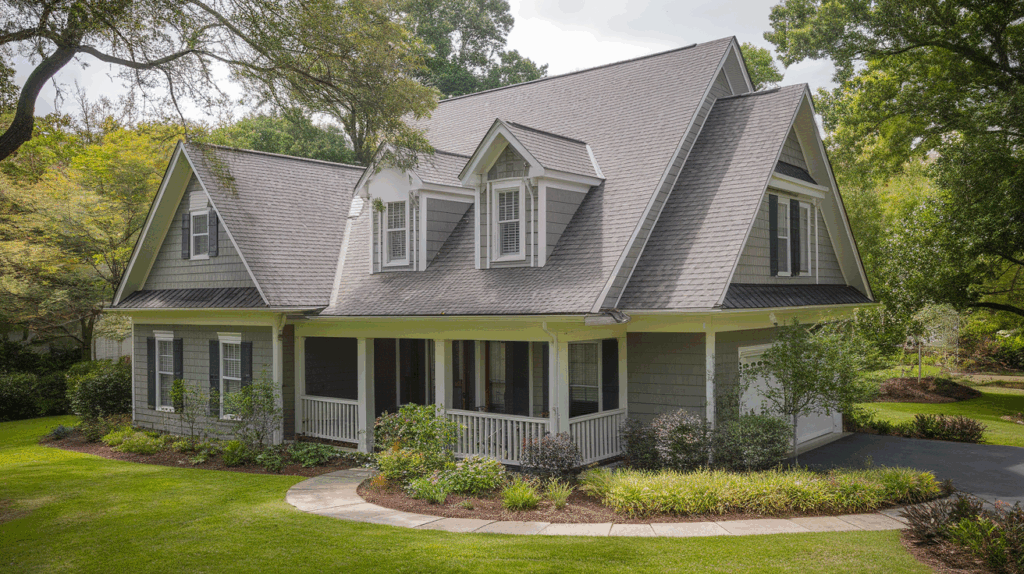
Sloped roofs with a 24-inch (61 cm) pitch shed water and snow efficiently, ideal for wet or snowy climates.
I’ve seen them add a classic, timeless charm to homes, boosting both function and curb appeal. They work well with asphalt shingles or tiles, offering flexibility for your design vision.
This style suits traditional or modern homes, providing excellent drainage and longevity. You’ll love how a sloped roof enhances your home’s silhouette while keeping it protected.
- Efficient Drainage: Sheds water and snow to prevent leaks.
- Classic Style: Complements traditional or modern home designs.
- Material Versatility: Pairs well with shingles, tiles, or metal.
2. Flat Roof Designs
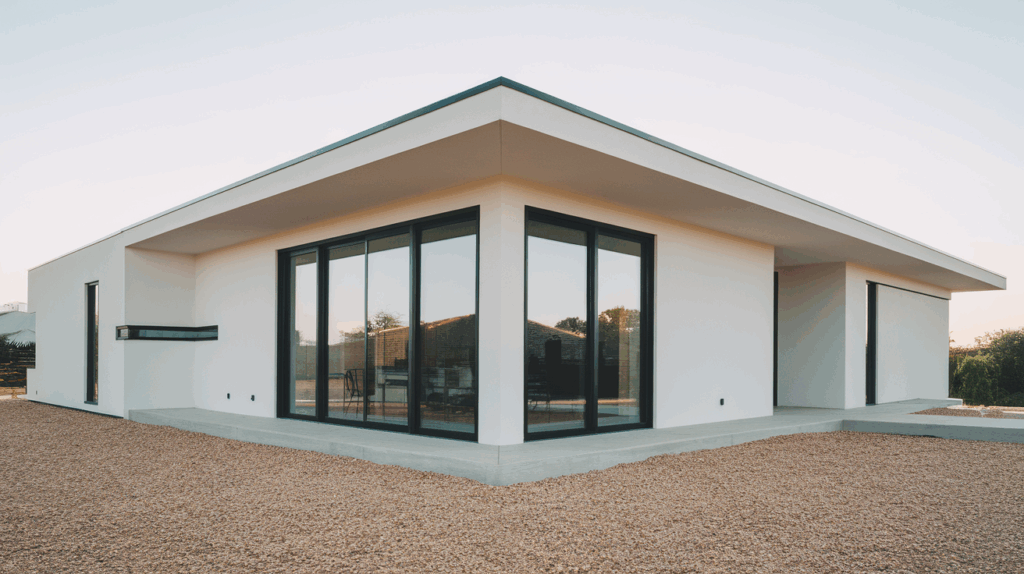
Flat roofs with minimal pitch (e.g., 2–4 inches/5–10 cm) offer a sleek, modern look for urban or minimalist homes.
I find them great for dry climates, where drainage is less critical, and they support features like rooftop decks. They require durable membranes (e.g., 60-mil TPO) to prevent leaks.
This design maximizes usable space and adds a contemporary edge. You’ll appreciate the clean lines and versatility for your new build.
- Modern Aesthetic: Sleek design suits urban or minimalist homes.
- Usable Space: Supports rooftop decks or solar panels.
- Membrane Durability: TPO or EPDM ensures water-tight seals.
3. Asphalt Shingle Roofs
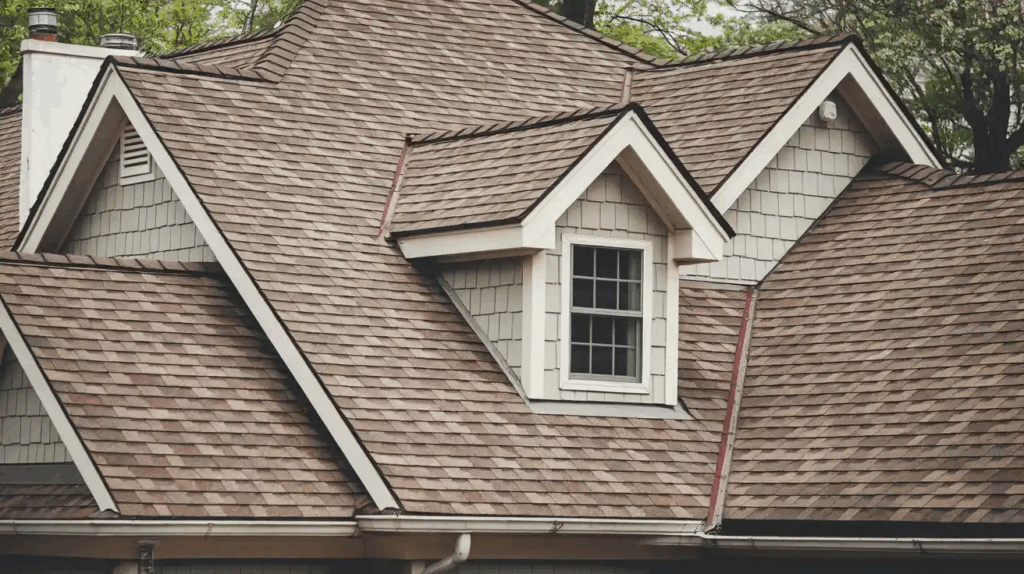
Asphalt shingles, typically 36×12 inches (91×30 cm), are a budget-friendly, durable choice for new builds.
I love how they balance affordability with style, offering colors and textures to match any home. They’re easy to install and maintain, making them ideal for 24-inch (61 cm) pitch roofs in varied climates.
You’ll value their versatility and long lifespan, keeping your roof resilient and attractive.
- Cost-Effective: Affordable option with strong performance.
- Varied Styles: Multiple colors and textures for customization.
- Easy Maintenance: Simple repairs extend roof life.
4. Metal Roofs
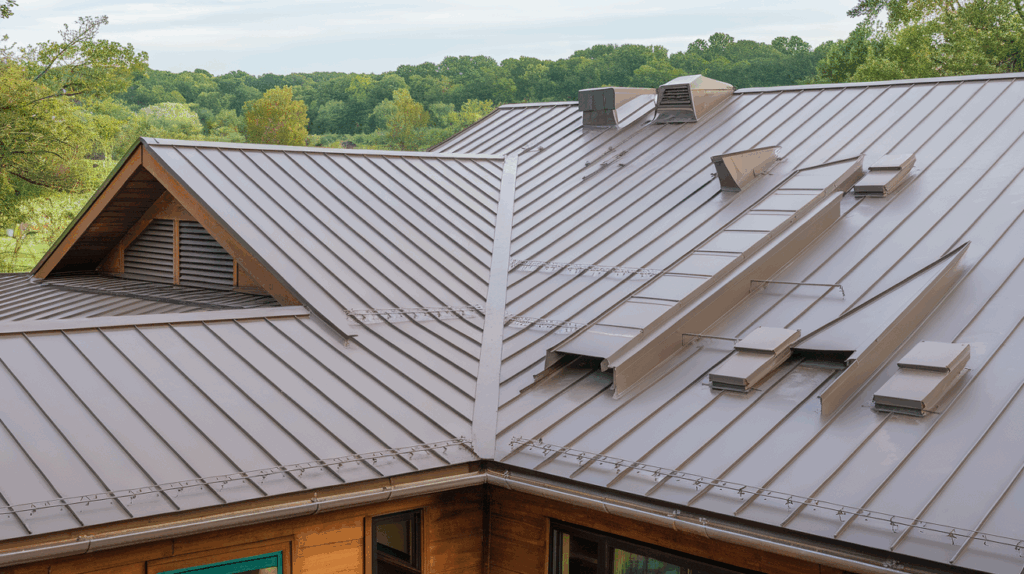
Metal roofs, using 26-gauge panels (e.g., 36×24 inches/91×61 cm), provide exceptional durability and energy efficiency.
I’ve seen them withstand harsh weather, from storms to UV rays, while reflecting heat to cut cooling costs.
They’re ideal for sloped or flat roofs, adding a modern, sleek look. You’ll like their low maintenance and long-term savings for your new home.
- High Durability: Resists wind, rain, and sun exposure.
- Energy Efficiency: Reflects heat to lower cooling costs.
- Modern Look: Sleek panels enhance contemporary designs.
5. Tile Roofs
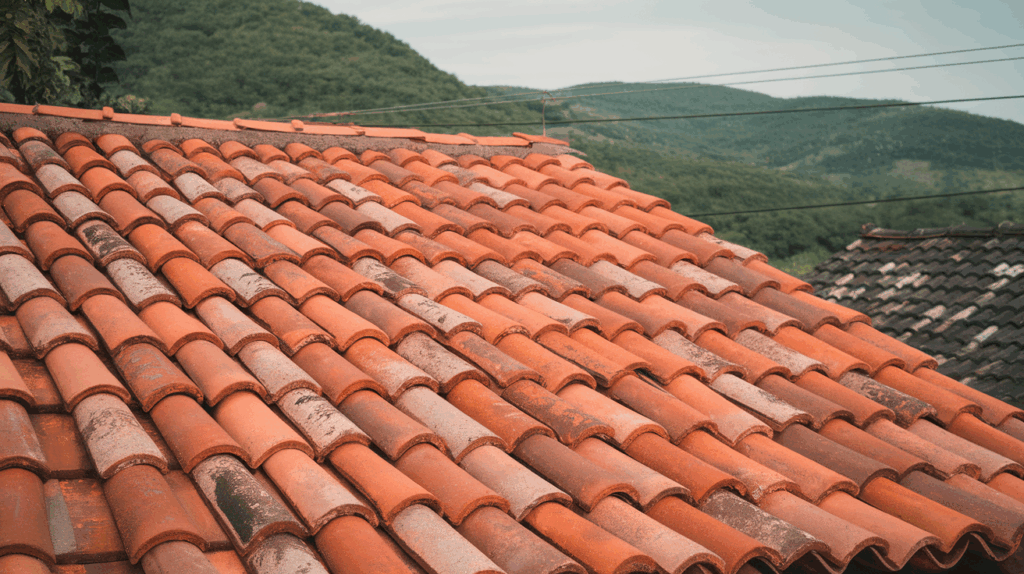
Tile roofs, with clay or concrete tiles (e.g., 17×13 inches/43×33 cm), offer a premium, elegant look for new builds.
I find them ideal for warm climates, where their heat resistance and durability shine. They add a Mediterranean or Spanish flair, boosting curb appeal for upscale homes.
You’ll love their longevity and distinctive style, though they require sturdy framing.
- Heat Resistance: Stays cool in hot climates.
- Premium Aesthetic: Adds elegant, Mediterranean charm.
- Long Lifespan: Durable tiles last for decades with care.
Practical Tips for Roofing Your New Construction
Your new home deserves a roof that’s both functional and stylish, so explore these tips to plan and execute your roofing project. These ideas ensure your roof performs well and looks great.
1. Choose Climate-Appropriate Materials
Select materials suited to your local climate, like asphalt shingles for mixed weather or tiles for hot regions.
I’ve found that matching materials to conditions, such as 26-gauge metal for stormy areas, prevents damage and boosts longevity.
This approach keeps your 24-inch (61 cm) pitch roof resilient and visually appealing. Check local weather patterns to ensure your choice handles rain, snow, or heat effectively. You’ll love a roof that stands strong and complements your home’s style.
- Weather Fit: Match materials to rain, snow, or heat conditions.
- Longevity Boost: Climate-appropriate choices reduce repairs.
- Visual Charm: Materials enhance your home’s overall look.
2. Plan for Energy Efficiency
Opt for energy-efficient roofing, like reflective metal or cool shingles, to cut heating and cooling costs.
I love how these options lower utility bills while keeping your home comfortable year-round. For a 24-inch (61 cm) pitch, consider adding insulation (e.g., R-30 rating) for extra savings.
This ensures your roof performs sustainably and stylishly. You’ll appreciate the cost savings and eco-friendly vibe for your new build.
- Reflective Materials: Metal or cool shingles reduce heat absorption.
- Insulation Boost: R-30 or higher improves energy savings.
- Sustainable Style: Eco-friendly roofs add modern appeal.
3. Budget Wisely for Materials and Labor
Set a realistic budget for your roofing project, factoring in materials, labor, and future maintenance.
I recommend getting quotes for asphalt ($100–150/square) or metal ($300–500/square) to balance cost and quality. A well-planned budget prevents surprises and ensures a durable roof.
You’ll value the peace of mind from a financially smart plan that keeps your home protected and stylish.
- Material Costs: Compare asphalt, metal, or tile prices.
- Labor Estimates: Include installation for accurate budgeting.
- Future Savings: Quality materials reduce long-term costs.
4. Hire Experienced Contractors
I’m a fan of hiring skilled roofers with new construction experience for your 24-inch (61 cm) pitch roof.
Pros ensure proper installation, preventing leaks and boosting durability. Check reviews and past projects to find reliable contractors who understand your design vision.
You’ll love the polished result and long-term value a quality roofer brings to your new home.
- Expert Installation: Pros prevent leaks and errors.
- Project Experience: Choose roofers familiar with new builds.
- Value Boost: Quality work enhances roof lifespan.
Maintenance and Long-Term Planning for Your New Roof
You deserve a roof that lasts and looks great, so I’m sharing tips to maintain your 24-inch (61 cm) pitch roof and plan for its future. These strategies keep your new build protected and stylish.
- Inspect Annually: Use binoculars or hire a roofer to check for loose shingles or flashing, especially after storms.
- Clean Gutters & Valleys: Clear debris every few months, especially in 18–24″ open valleys, to prevent water buildup.
- Use Durable Flashing: Install 26-gauge aluminum flashing (18–24″) around chimneys and valleys to guard against leaks.
- Budget for Repairs: Set aside $500–$1,000 yearly for repairs or upgrades to extend roof life and stay ready.
- Get a Good Warranty: Choose roofing with solid warranties—20–30 years for shingles, up to 50 for metal—to protect your investment.
Conclusion
I believe that a well-planned roof is essential for the longevity, efficiency, and aesthetics of your new home.
I’ve shared key insights on materials, design options, and budgeting to help guide your decision-making.
By considering factors like climate, energy efficiency, and long-term maintenance, you can ensure your roof remains durable and stylish for years to come.
Don’t forget to choose a trusted contractor for installation and take advantage of warranties for added peace of mind.
With proper planning and care, your roof will be a solid foundation for your home’s protection and value.

